Mastering Roof Inspections: Metal Roofs, Part 8
by Kenton Shepard and Nick Gromicko, CMI®
The purpose of the series “Mastering Roof Inspections” is to teach home inspectors, as well as insurance and roofing professionals, how to recognize proper and improper conditions while inspecting steep-slope, residential roofs. This series covers roof framing, roofing materials, the attic, and the conditions that affect the roofing materials and components, including wind and hail.
There are two types of fastening systems for metal panel roofs: through-fastening and concealed clips.
Through-Fastening
Through-fastening systems use fasteners that penetrate the metal and have gaskets designed to keep the penetration from leaking. Large-head screws with neoprene washers are the most common type.
Fasteners are often exposed and are typically driven through areas where panels overlap and/or through other locations specified by the manufacturer.
Thermal expansion and contraction of the metal roofing, and possibly movement of the substrate, can cause through-fasteners to loosen or back out over time. Metal roofing with loose or missing fasteners will suffer reduced wind resistance and possible moisture intrusion. These should be mentioned in your report.

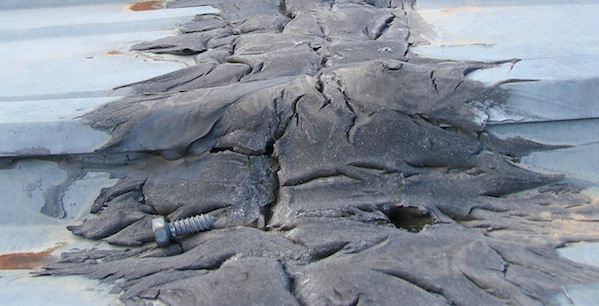
Because through-fasteners don’t allow metal to freely expand and contract, they may cause oil-canning, especially in roofs with larger panels.

Clip Fastening
The illustrations below show a variety of metal seams used in the roofing industry.
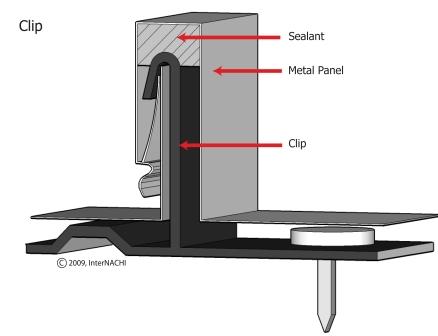

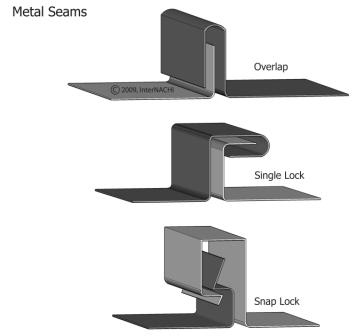
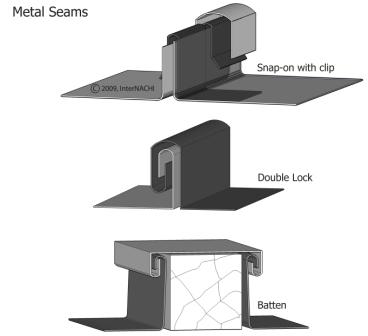
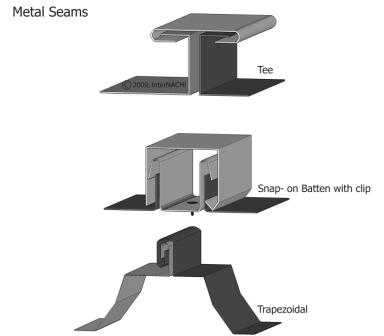
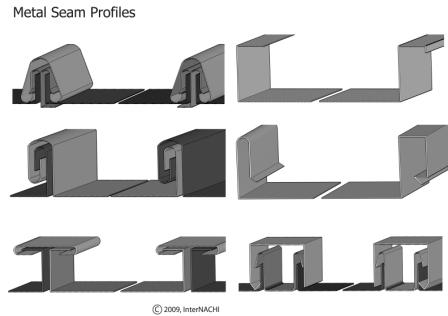
A number of fastener-related problems may cause leaks or corrosion. Fasteners may be:
- over-driven;
- under-driven;
- driven in crooked or at an angle;
- missing;
- protruding;
- poorly anchored. Fasteners that are driven into gaps between panels or plywood panels with voids may have inadequate withdrawal strength; and
- the wrong type. Fasteners not designed for use with metal roofing can be a problem due to galvanic corrosion, inadequate withdrawal strength, or failure to allow for thermal expansion and contraction of metal panels.
Walking Metal Panel Roofs
Metal roofs can be slippery when they’re dusty or wet. Stay off of them if these conditions exist. Soft-soled shoes or roof boots can help you maintain traction.
**************************************************
Learn how to master a roof inspection from beginning to end by reading the entire InterNACHI series: Mastering Roof Inspections.
Take InterNACHI’s free, online Roofing Inspection Course
Mastering Roof Inspections
Roofing Underlayment Types
Inspecting Underlayment on Roofs
Fall-Arrest Systems
Roofing (consumer-targeted)
More inspection articles like this

